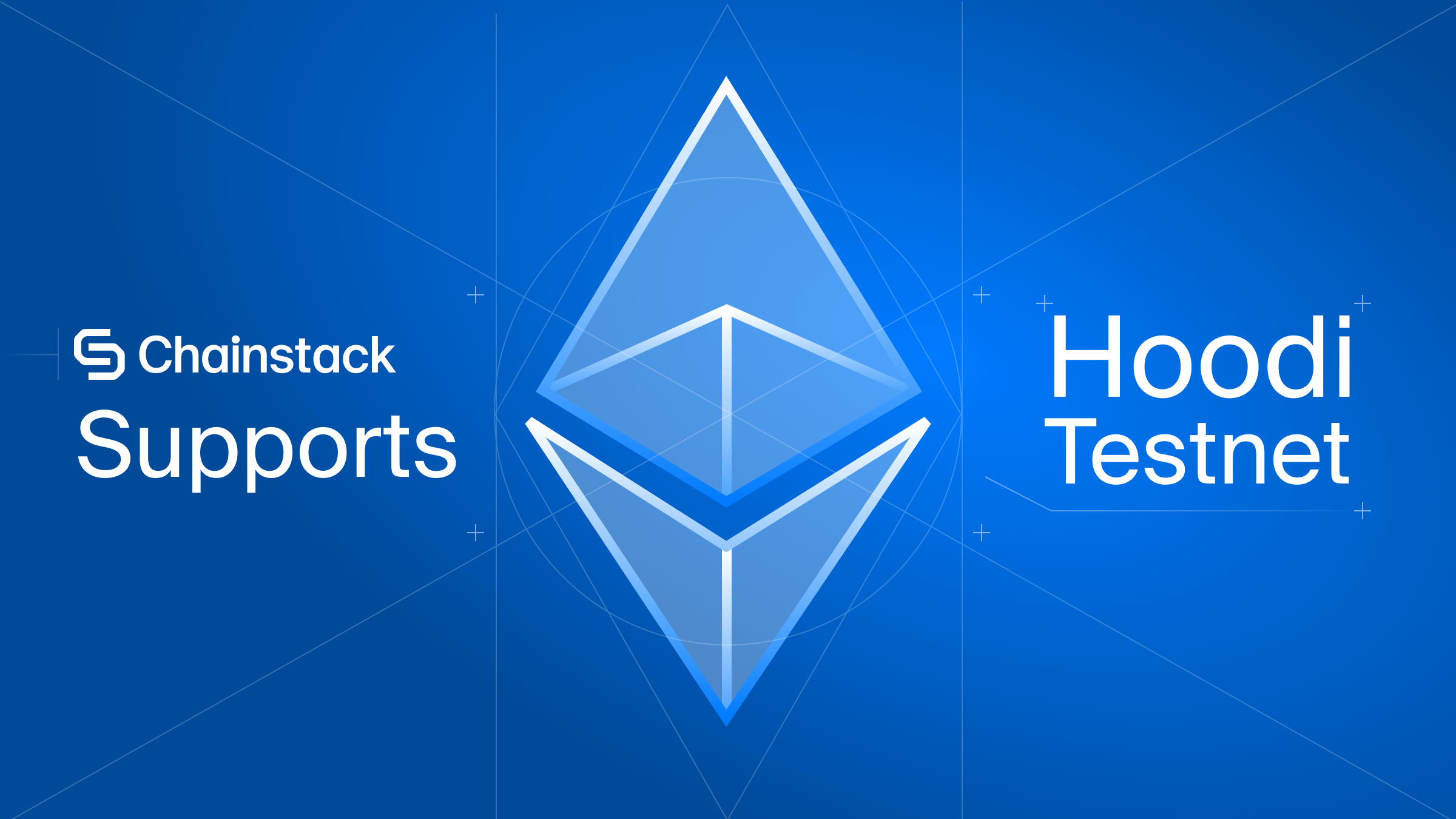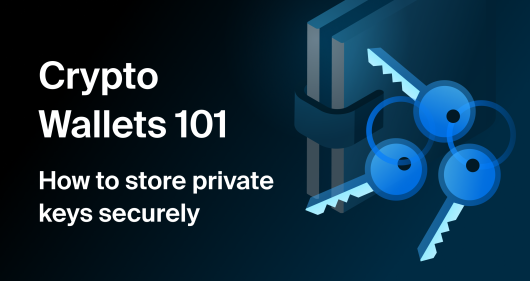Play-to-Earn: How crypto games are reshaping the way it’s meant to be played
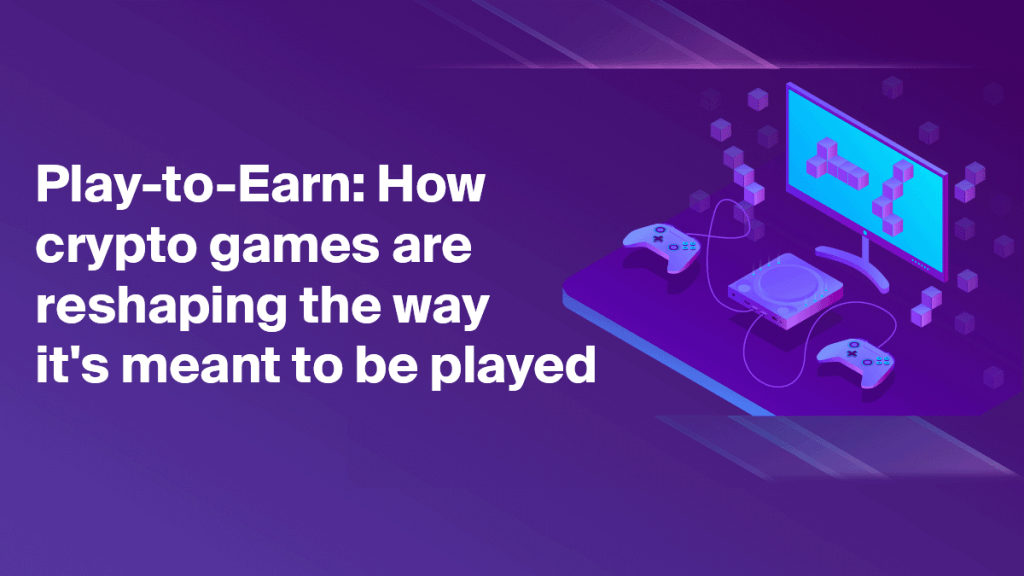
In a world where technology and gaming intersect and evolve at a rapid pace, nothing marks this trend more distinctly than the emergence of Play-to-Earn games. Earning while you play is no longer a fantasy, but a thrilling reality, made possible through advancements in blockchain technology.
Play-to-Earn, or “P2E” in shorter form, represents a gaming model where players can earn tangible rewards—including crypto tokens and NFTs—for their in-game triumphs. As opposed to traditional gaming models where players typically spend money on games without any financial comeback, P2E adds a thrilling twist; your character’s adventures in virtual worlds can translate into real-world profits.
And this revolution is supercharged by blockchain technology. By operating on a decentralized network, these games can provide a level of transparency and security that’s very appealing to players. Moreover, they offer the exciting prospect of earning money through the gameplay—unlike the “pay-to-win” or “freemium” models commonly found in traditional video games.
In Play-to-Earn games, your virtual gaming skills can have real-world value. Games such as Axie Infinity, Eldarune, and Iguverse are leading the way in this thrilling new era for the gaming industry.
Join us as we delve into the intricacies of Play-to-Earn games. We’ll explore how they work, what makes them unique, their challenges, and how they are carving out a new economic model within the gaming industry. Whether you’re a seasoned gamer, a blockchain enthusiast, or a curious reader, this exploration will provide an insight into the evolution of the gaming industry towards a player-centered economy.
What are Play-to-Earn games?
Play-to-Earn games are a new model of video games that reward players for in-game achievements with assets that hold real-world monetary value, marking a significant shift from the traditional gaming models we’ve grown accustomed to. These games utilize blockchain technology and its key feature of decentralization to offer a unique gaming experience where players’ in-game achievements are rewarded with assets of real-world monetary value.
The Play-to-Earn model is not restricted to blockchain games. Any traditional online game that allows players to sell items they earn or buy within an in-game marketplace for real-world money can technically be considered a Play-to-Earn game. However, the decentralized nature of blockchain gaming eliminates many of the restrictions and provides significantly more earning potential for dedicated gamers.
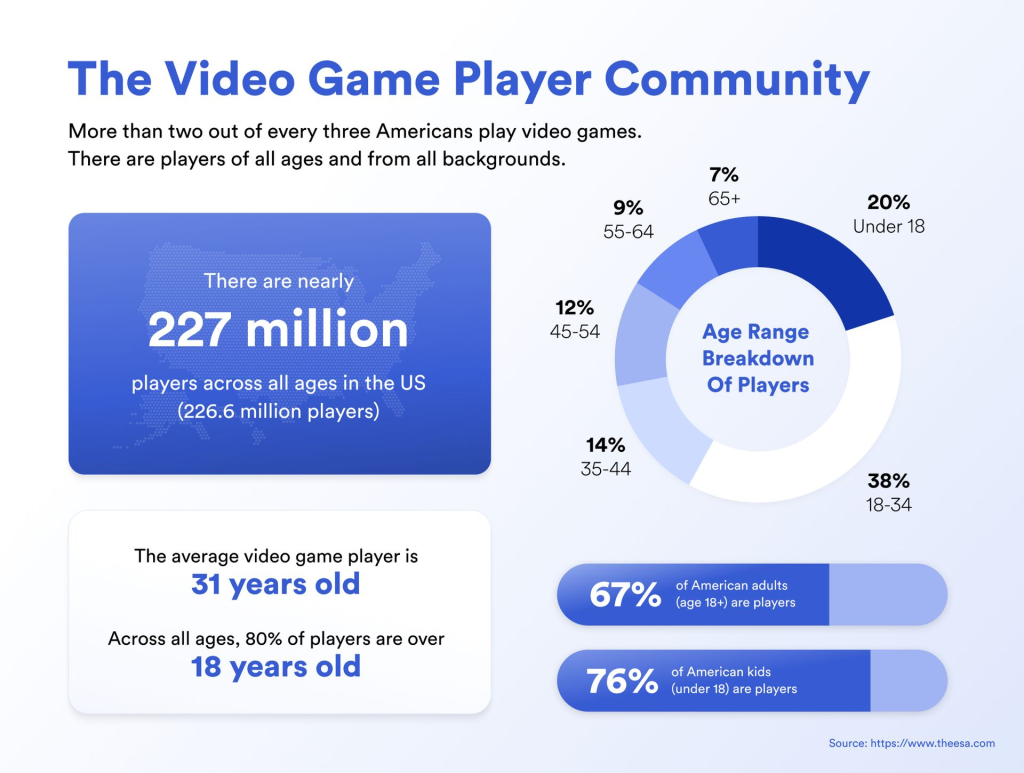
For many around the world, especially in developing countries, Play-to-Earn games have become a lifeline, providing an alternative way of making a living in times of economic hardship. The concept of earning while playing has revolutionized the gaming industry, providing a whole new level of interactivity and monetization.
The evolution of Play-to-Earn games
The concept of Play-to-Earn is not entirely new. Games like Second Life and Entropia Universe have long allowed players to earn and cash out virtual currency. However, the combination of cryptocurrencies, NFTs, and DeFi / GameFi mechanisms in today’s blockchain games have pushed the boundaries of what’s possible.
Blockchain makes the Play-to-Earn model viable, advantageous, and appealing for players. It ensures transparency, fairness, and security while enabling the seamless exchange of assets across different platforms. The technology also offers innovative game design possibilities, injecting unpredictability and suspense that keep players engaged and entertained.
With blockchain, in-game economies become more democratic and less confined by the whims of game developers. Players can freely trade their assets with others, offering a novel way for gamers to earn cryptocurrencies that they can exchange for real-world money.
Blockchain technology is changing the way we look at online gaming, taking it beyond mere entertainment. The Play-to-Earn model stands as an impactful demonstration of how blockchain can redefine sectors, opening avenues previously unimagined.
Benefits of Play-to-Earn games
The upside of Play-to-Earn games can be multifold. Primarily, they allow players to be compensated for their time and commitment to the game. This shakes up the traditional gaming paradigm where players pour money into a game for digital goods but never see any return.
In a Play-to-Earn game, the player is an active participant in the game’s economy. They have the opportunity to earn real money through their in-game decisions and skill levels. This model grants players financial autonomy and can result in a significant income for successful and dedicated gamers.
There is also a sense of true ownership and more significant interaction. The blockchain records all transactions transparently and immutably. Thus, an asset bought or earned in a game becomes truly owned by the player, like a physical item in the real world. They can trade, sell, or hold these assets as they see fit, opening new dimensions of strategy and planning.
Here are some key reasons why gamers and non-gamers alike are exploring P2E games:
- Earn real rewards: Play-to-Earn gamers can earn cryptocurrency and NFTs from their in-game accomplishments—assets that have real-world value beyond the gaming environment.
- Ownership over in-game items: Because items are tracked on decentralized blockchain networks, gamers can take full ownership of the items and assets they earn from gameplay. This adds a layer of value and tangibility to their gaming experiences.
- Participation in strong communities: Gamers often network with other community members in online forums, where they share in-game strategies, experiences, and make personal connections. This social aspect of P2E games can be immensely gratifying.
- New economic opportunities: Many individuals use Play-to-Earn games as a supplementary income source, creating new streams of revenue—sometimes even more profitable than traditional job markets.
- Entertainment: Beyond the financial benefits, Play-to-Earn games offer unique and immersive gaming experiences that are a source of pure fun!
By providing utmost control to the players and rewarding their efforts with tangible benefits, Play-to-Earn games create an empowering and fun environment that holds the potential to revolutionize the world of online gaming. However, like any other industry, it’s not devoid of criticisms and challenges, which are essential to understanding the complete picture of P2E gaming.
Challenges for Play-to-Earn games
While there are evident advantages of Play-to-Earn games, it is essential not to overlook the potential pitfalls and challenges. For one, the gaming experience can become heavily influenced by the game economy, which may overshadow the elements of fun and enjoyment. As the players’ in-game activities can either result in earning or losing real money, the pressure could lead to an overly competitive environment.
Also, the regulatory aspect of these games is still under scrutiny. As P2E merges the realms of gaming and finance, it navigates a gray area in terms of regulation and tax implications. Governments around the world are still figuring out how to govern and tax in-game profits, creating uncertainty for players.
Lastly, as these games involve considerable financial transactions, they could become potential targets for hackers and scammers. Safety and security are paramount concerns, reinforcing the need for robust security measures and responsibilities both by game developers and players.
Here’s a quick recap of the pitfalls that Play-to-Earn players should be mindful of:
- Price volatility: Given the inherently volatile nature of cryptocurrencies, earnings from these games can fluctuate drastically, posing a risk to players relying on it for steady income.
- High entry barriers: Some Play-to-Earn games require an initial investment to get started. For example, in Axie Infinity, players must first acquire three Axies—an investment which can run up to hundreds of dollars.
- Risk of scam: Like any digital frontier, the realm of Play-to-Earn games is prone to scams and malicious activities. It is crucial for players to do their research and rely on trusted sources.
- Tax implications: Players must acknowledge the tax obligations that come with crypto earnings from Play-to-Earn games, which adds an element of complexity.
- Interoperability: Blockchain’s lack of cross-communication is a hurdle for Play-to-Earn games. With users preferring to stay on one blockchain and the unsustainability of deploying games on multiple chains, we need efficient solutions as blockchain technology advances and broadens.
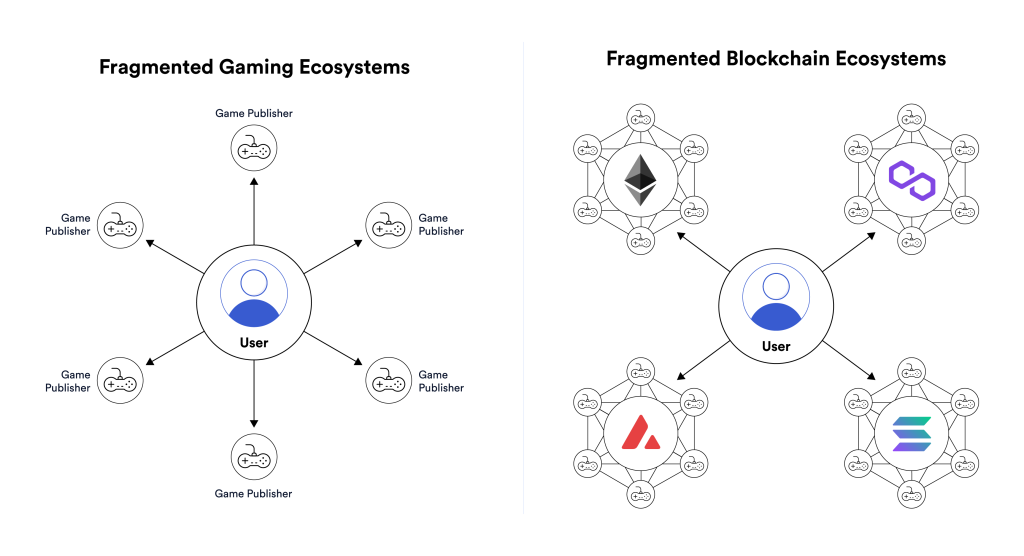
Also, it’s worth mentioning that the monetary aspect could potentially detract from the fun and relaxation that games usually provide, turning it into more of a job than a leisurely activity. As with all things, balance is the key.
The Play-to-Earn model is an exciting development in the gaming world, but participants need to navigate it with vigilance and care, being aware of both the advantages and the potential drawbacks it brings. With a thorough understanding and the right strategy, the world of Play-to-Earn gaming could indeed be a rewarding playground.
Differences between Play-to-Earn and traditional games
Comparing Play-to-Earn games with traditional video games, a significant difference lies in Play-to-Earn games’ potential for revenue generation. Traditional video gaming was mostly an entertaining pastime; however, the Play-to-Earn model has shown that video gaming can also be a revenue-generating activity.
Unlike traditional video games like World of Warcraft or Minecraft, the kind of remuneration Play-to-Earn games offer the players stands as a stark difference. Traditional games never allowed players to cash out their in-game victories in real-world money.
However, blockchain has revolutionized this model. It brought in the Play-to-Earn model, allowing players to buy and sell characters, skins, abilities, and items on an open market. Consequently, the native currency of the video game can be used outside of the games’ economy, allowing players to exchange their real money for game cryptocurrency, and vice versa.
Here’s a comparison:
- Ownership: Unlike traditional games where players lease digital assets, Play-to-Earn games operate on blockchain technology, allowing players to achieve true ownership over in-game assets, which they can trade or sell.
- Monetization: Conventional games rarely offer players a way to monetize their skills or time spent in the game, and in-game purchases often serve cosmetic purposes. On the other hand, Play-to-Earn games enable players to earn tokens with real-world value that they can cash out, making their gaming activities potentially lucrative.
- Community participation: While traditional games often have passionate communities, Play-to-Earn games take this a step further. Many P2E games have community governance structures, allowing players to vote on various aspects of the game’s future.
- Costs and profits: Traditional games often require a one-time purchase or subscription fee, but subsequent in-game assets come at no additional cost. In contrast, the starting costs for Play-to-Earn games can be higher, as players might need to buy initial assets. However, Play-to-Earn games also put forth opportunities for players to make profits through trading and other in-game activities.
- User demographics: Play-to-Earn games have found popularity among a wide demographic, including gamers looking for profitable opportunities, crypto enthusiasts, and even people in developing nations looking for additional income sources.
In conclusion, while traditional games focus on entertainment and user engagement, Play-to-Earn platforms lean towards user profitability and efficacy. However, this doesn’t detract from the entertainment value they provide, but rather adds a unique layer of interest and engagement.
How Play-to-Earn games work
Play-to-Earn games reward players with digital assets that have real-world value, as players progress in the game. These rewards can take the form of cryptocurrencies or NFTs. As an amalgamation of traditional gaming and the investing world, Play-to-Earn games create a fresh realm that hugely enriches the player experience beyond game-specific achievements.
At the heart of this gaming model is the blockchain network, whether it is a typical Layer 1 chain, like Ethereum, or a dedicated one like Ronin. Game designers use these platforms and their associated tools to create crypto-compatible gaming experiences. They can tokenize the game items, which, being traced on the blockchain network, give the players rightful ownership of these assets.
For example, in a game like Axie Infinity, players can become proud owners of Axies—the collectible creatures used to battle others in the game. These Axies, being NFTs, are entirely under the ownership of the player. The player can sell these Axies on the game’s native marketplace or secondary NFT marketplaces, earning the game’s native tokens in return.

These tokens, having real-world value, can be converted into a government-issued fiat currency via a cryptocurrency platform, suggesting how players can reap benefits in tangible forms.
Controlling value creation in Play-to-Earn games
In the Play-to-Earn gaming ecosystem, value creation is no longer strictly controlled by the game developers. Instead, power falls onto the hands of the players, who can earn real value through their gaming activities. This shift of power is a significant departure from traditional gaming models.
Previously, value would be created whenever a player bought a game or made in-game purchases. For free games, value would be extracted from advertising revenue. No matter how many hours the players dedicated to the game, the content they created, or the experiences they contributed to, they would not get a cut from it.
Play-to-Earn games flip this model around. By allowing players to earn cryptocurrency and NFTs, the players are the ones creating the economic activity. The more engaging and rewarding the game is, the more players it will attract, and the more value it will generate. In a way, as players are now essential for value creation, this model can be rewarding for both the players and the developers, creating a mutually beneficial situation.
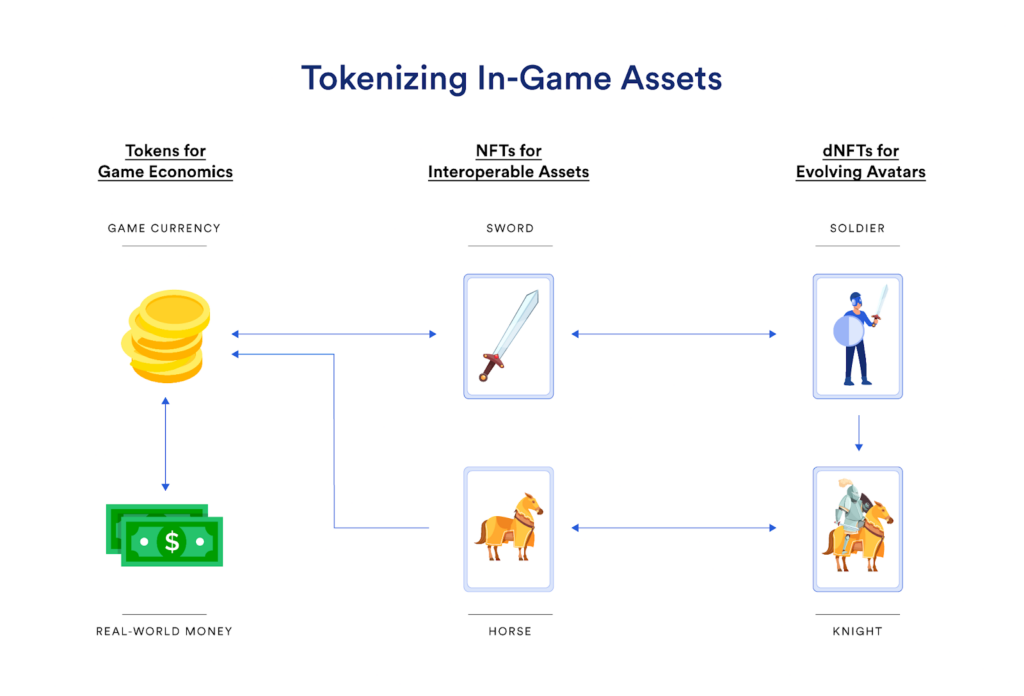
However, this shift in power dynamics also implies responsibilities for the players. They need to manage their assets, understand the game’s economy and keep track of the legal implications in their local jurisdictions. Hence, navigating the Play-to-Earn model successfully requires skill, knowledge, and diligence.
Closed vs open game Play-to-Earn economies
An essential aspect of understanding Play-to-Earn games better involves the comparison between closed game economies (traditional games) and open game economies (blockchain-powered games).
In a closed game economy, the game developers maintain total control. They dictate in-game prices, regulate supply and demand, and retain ownership of in-game assets. Consequently, gamers can’t earn real-world value from their in-game achievements. Any virtual earnings remain confined within the game’s ecosystem. Thus, while you might acquire a rare item in a traditional video game, it remains the property of the game, and it’s prohibited and impossible in most cases to sell these items for real-world money.
On the other hand, an open game economy like those in Play-to-Earn games are governed by smart contracts, and players are free to buy, sell, trade, and own their in-game assets, thanks to blockchain technology. These games allow players to earn and build up wealth via their in-game achievements and activities. Players can even leverage these assets to accrue further value, such as renting or selling them in the marketplace.
Open game economies mark a revolutionary change, heavily disrupting the gaming industry. They provide financial opportunities and decentralize wealth and power from the developers to the players.

However, with these newfound opportunities come challenges and responsibilities, ranging from understanding the game’s mechanics and market trends to acquiring basic cryptocurrency and NFT knowledge. Thus, while intriguing and profitable, the Play-to-Earn space is also complex, necessitating thorough research and understanding from its participants.
How to get started with Play-to-Earn games
As the Play-to-Earn model gains traction, many gamers and non-gamers are eager to start their journey in this new gaming niche. Here are some steps beginners can take:
- Understand the dynamics: Before diving in, it’s vital to familiarize yourself with how Play-to-Earn games work. Take time to read up on blockchain technology, NFTs, and cryptocurrency basics.
- Choose the right game: Not all Play-to-Earn games operate the same way. Some might require a high initial investment, while others might be more beginner-friendly. Spend time researching different games, their mechanisms, potential earnings, and their communities to find one that suits you best.
- Set up a crypto wallet: Since Play-to-Earn games use cryptocurrencies, a crypto wallet is necessary to manage and trade your crypto assets. You might also need to purchase game-specific tokens to get started.
- Start playing and learning: There’s no better way to understand the game than by playing it. Ensure you are aware of the game’s rules, mechanics, and strategies. It’s also helpful to connect with the game’s community to gain insights and tips.
- Manage your earnings: Be smart about managing your in-game profits. Every earnings you make are subject to real-world taxes. Also, consider the volatility of cryptocurrencies before converting your earnings.
- Stay updated: The crypto and gaming industry move fast, and new Play-to-Earn games are constantly being developed. It’s beneficial to stay current with recent trends and developments in this space.
Remember, while the potential earnings of P2E games might be enticing, one should also pay attention to the risks involved. Take one step at a time, and most importantly, make sure to enjoy the game itself.
Notable Play-to-Earn games
The allure of Play-to-Earn games reaches far and wide. Here is an overview of some of the popular games that have capitalized on this trend:
- Axie Infinity: Axie Infinity, a pioneering game in the Play-to-Earn model, lets users collect, breed, raise, and battle Axies—fantasy creatures residing in the Axie Infinity universe. Built on the Ethereum blockchain, each Axie represents an NFT with a distinctive genetic makeup. Players can earn Small Love Potions (SLPs), the in-game currency, by winning battles and completing daily tasks. SLPs can be traded for other cryptocurrencies, thereby delivering real-world income.
- Eldarune: Eldarune takes the GameFi model a notch higher by incorporating multifaceted earning opportunities. Active earnings come from PvP battles, campaigns, competitions, token drops, and NFT rewards. Meanwhile, passive income streams include staking ELDA tokens, NFT lending, farming, and liquidity provision. These income sources keep players invested long-term, creating a sustainable in-game economy that mirrors real-world financial systems.
- IguVerse: IguVerse is a multiplayer social game that revolutionizes play-to-earn mechanics by combining “Socialize-to-Earn,” “Move-to-Earn,” and “Play-to-Earn” into one online platform. The game encourages real-life activities and social media interaction, incentivizing players with rewards for tasks like sharing pet photos. The concept unifies pet owners globally into one platform and incentivizes typical social media activity with cryptocurrency rewards.
While these games offer a direct pathway from gaming to earning, players must always consider these video games’ inherent volatility and risks. Like any investment, players should thoroughly research and understand how each game operates before participation.
Bringing it all together
Play-to-Earn games are revolutionizing the gaming industry by enabling players to own their in-game assets and even monetize these assets for real-world benefits.
From granting players the power to earn cryptocurrency and NFTs, fostering strong online communities, to defining an entirely new economic model, Play-to-Earn games are a testament to the dynamic union of gaming and blockchain technology.
Remember games like Axie Infinity, Eldarune, and IguVerse, each offering unique approaches to the Play-to-Earn model. The gaming world is witnessing an incredible transformation towards player-centric economies with opportunities for everyone to play, earn, and own.
As the landscape of Play-to-Earn games continues to unfold, it’s a thrilling time to be a gamer and an investor. Keep exploring, strategizing, and playing!
Always remember to start with a secure digital wallet, understand the game’s dynamics, approach with a strategy, and most importantly, have fun! This is just the beginning of a new era of gaming. Stay tuned for more developments in this exciting space.
Power-boost your project on Chainstack
- Discover how you can save thousands in infra costs every month with our unbeatable pricing on the most complete Web3 development platform.
- Input your workload and see how affordable Chainstack is compared to other RPC providers.
- Connect to Ethereum, Solana, BNB Smart Chain, Polygon, Arbitrum, Base, Optimism, Avalanche, TON, Ronin, zkSync Era, Starknet, Scroll, Aptos, Fantom, Cronos, Gnosis Chain, Klaytn, Moonbeam, Celo, Aurora, Oasis Sapphire, Polygon zkEVM, Bitcoin and Harmony mainnet or testnets through an interface designed to help you get the job done.
- To learn more about Chainstack, visit our Developer Portal or join our Discord server and Telegram group.
- Are you in need of testnet tokens? Request some from our faucets. Multi-chain faucet, Sepolia faucet, Holesky faucet, BNB faucet, zkSync faucet, Scroll faucet.
Have you already explored what you can achieve with Chainstack? Get started for free today.
 Ethereum
Ethereum Solana
Solana TON
TON Base
Base BNB Smart Chain
BNB Smart Chain Sui
Sui Unichain
Unichain Aptos
Aptos TRON
TRON Ronin
Ronin zkSync Era
zkSync Era Sonic
Sonic Polygon
Polygon Gnosis Chain
Gnosis Chain Scroll
Scroll Avalanche Subnets
Avalanche Subnets Polygon CDK
Polygon CDK Starknet Appchains
Starknet Appchains zkSync Hyperchains
zkSync Hyperchains











